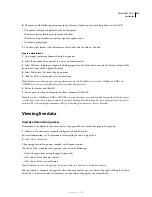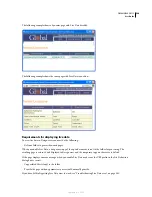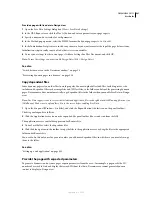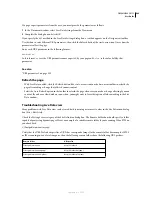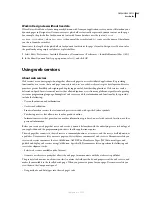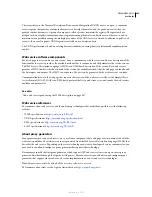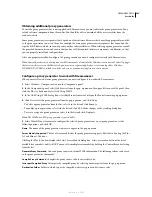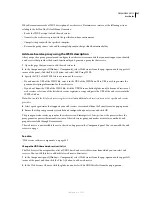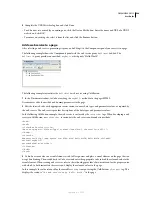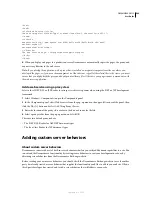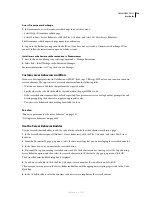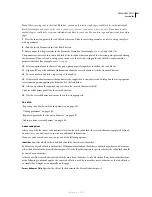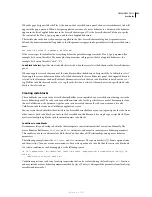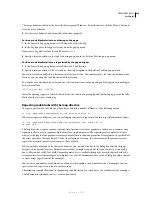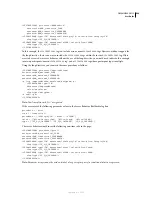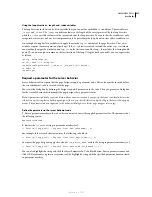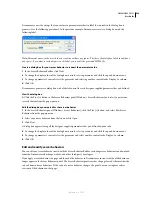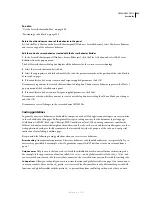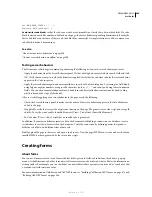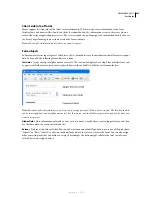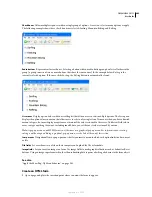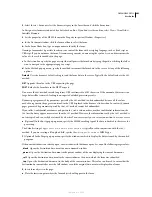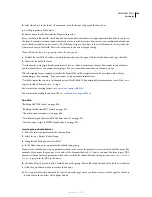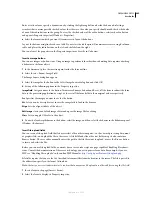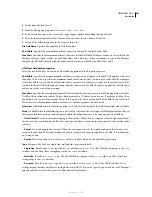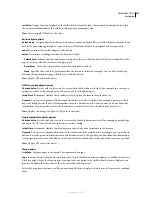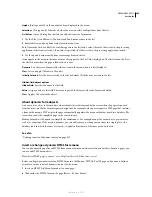
DREAMWEAVER CS3
User Guide
593
Effectively using conditional expressions
When using
if
,
else
, and
elseif
directives within the
insertText
XML tag, the participant text is preprocessed
to resolve the
if
directives and to determine which text to include in the result. The
if
and
elseif
directives take
the expression as an argument. The condition expression is the same as that for JavaScript condition expressions, and
can also contain server behavior parameters. Directives such as this allow you to choose between alternative code
blocks based on the values of, or relationships between, server behavior parameters.
For example, the following JSP code comes from a Dreamweaver server behavior that uses a conditional code block:
@@rsName@@.close();
<@ if (@@callableName@@ != '') @>
@@callableName@@.execute();
@@rsName@@ = @@callableName@@.getResultSet();<@ else @>
@@rsName@@ = Statement@@rsName@@.executeQuery();
<@ endif @>
@@rsName@@_hasData = @@rsName@@.next();
The conditional code block starts with
<@ if (@@callableName@@ != '') @>
and ends with
<@ endif @>
.
According to the code, if the user enters a value for the
@@callableName@@
parameter in the server behavior's
Parameter dialog box—in other words, if the
@@callableName@@
parameter value is not null, or
(@@callableName@@ != '')
—then the conditional code block is replaced with the following statements:
@@callableName@@.execute();
@@rsName@@ = @@callableName@@.getResultSet();
Otherwise, the code block is replaced with the following statement:
@@rsName@@ = Statement@@rsName@@.executeQuery();
See also
“Repeating code blocks with the loop directive” on page 595
Positioning a code block
When you create code blocks using the Server Behavior Builder, you must specify where to insert them in the page’s
HTML code.
For example, if you insert a code block above the opening
<html>
tag, you must then specify the code block’s position
relative to other tags, scripts, and server behaviors in that section of the page’s HTML code. Typical examples include
positioning a behavior either before or after any recordset queries that might also exist in the page code above the
opening
<html>
tag.
When you select a positioning option from the Insert Code pop-up menu, the options available in the Relative
Position pop-up menu change to provide relevant options for that part of the page. For example, if you select Above
The
<html>
Tag In The Insert Code pop-up menu, the positioning options available in the Relative Position pop-up
menu reflect choices relevant for that part of the page.
The following table shows the code block insert options, and the relative positioning options available for each:
September 4, 2007

